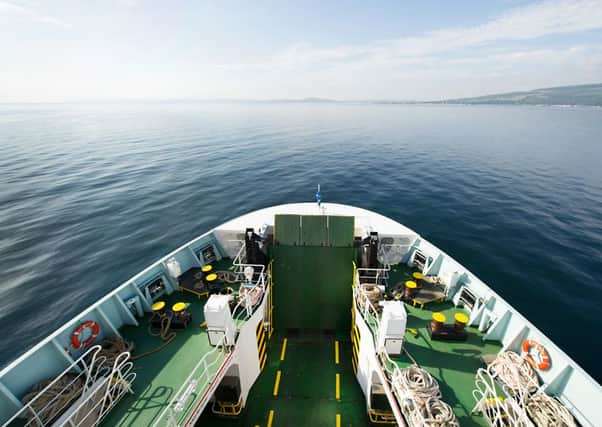Alastair Dalton: CalMac's every move under the microscope


Those who depend on the ferries to get about can get vexed at any change to the service.
Many treat the Caledonian MacBrayne network as a public utility like water or electricity – and in a way it is, being one of Scotland’s last state-owned transport operators.
Advertisement
Hide AdAdvertisement
Hide AdThere have been gripes over everything from fares, cancellations, vehicle space and timetable alterations.
It was even said that some on Islay thought a new ferry, the Finlaggan, was too plush when it was introduced five years ago.
This has also given politicians of all parties the opportunity to attempt to make capital out of CalMac’s perceived trials and tribulations.
This year, Labour demanded the SNP-run Scottish Government abandon the competition for CalMac’s next contract – just as the SNP had done during the last contest when Labour was in power.
The ferry operator is now in the firing line for moving its vessels around.
This has been a classic source of upset, as islanders like to appropriate individual ferries as “theirs” even though CalMac depends on the flexibility to swap them about, such as during maintenance work and breakdowns.
The latest row involves the Coruisk, which sailed between Mallaig and Armadale, on the Sleat peninsula of southern Skye.
The ferry was redeployed this year to provide more sailings between Oban and Mull instead, to meet extra demand created by fares being cut under the Scottish Government’s “road equivalent tariff” scheme to provide parity with land transport.
Advertisement
Hide AdAdvertisement
Hide AdThe predictable delight on Mull was matched by anger on the Sleat peninsula because of problems with the ferries which replaced the Coruisk led to more than 100 sailings being cancelled. These appear to have been largely due to exceptionally low tides preventing the ferries from docking, as they were designed to use slipways rather than the linkspans – drawbridges – on the route.
Feelings ran so high that the Sleat Transport Forum called for the resignation of CalMac managing director Martin Dorchester.
Things came to a head when it seemed at the beginning of the month that the Coruisk might be returning to Skye – but then hopes were dashed.
CalMac was widely condemned for an apparent U-turn, but it now appears the Scottish Government’s Transport Scotland agency, which controls the operator, was against the plan. It told me this week: “CalMac have looked at all feasible options to move the MV Coruisk back to Skye this summer, but none of these is possible without seriously impacting other communities.”
The saga demonstrates how incendiary any changes to CalMac’s operations can be – and the need for far more preparatory work on the potential implications they might have.
CalMac says timetable changes on the route have vastly improved performance and traffic is at record levels, but to the casual observer it will look like a publicity disaster for the company.
However, the firm will remain in public hands after it fought off contract challenger Serco last month, and ministers kept stressing they would retain tight control, whoever won. Something to bear in mind for the next skirmish.